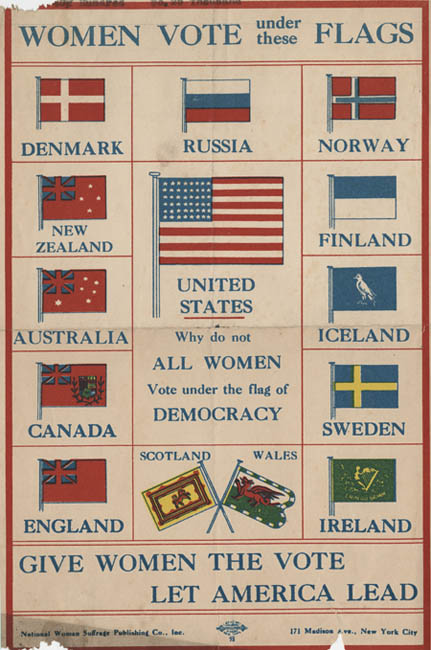Women Vote Under These Flags.
Upon its formation, the Equal Suffrage League was already lagging behind the national suffrage movement that had begun nearly half a century earlier. By 1909, the National American Woman Suffrage Association (NAWSA) had moved beyond public education on suffrage and into direct political action with a public relations bureau, a large campaign fund, and a professional congressional lobby.
Both the NAWSA and state groups employed many methods to make their arguments, as indicated by this flyer highlighting the disparity between the voting rights of women in other countries and those in the U.S.
Suffrage organizations wrote rallying songs and hosted debates, among other activities. In the South, however, suffrage organizations were weak or non-existent until the second decade of the 20th century. So when the ESL formed, it had to start its suffrage education phase (even among its own members) fully 20 years after the inception of national organizations.
Initially, as it operated within a political system focused on states’ rights, the ESL’s main goal was passage of an amendment to the state constitution rather than an amendment to the U.S. Constitution. As Virginia’s political infrastructure did not support a true opposition party for the ESL to align itself with, the league had a slow start, making it difficult to make real inroads.


